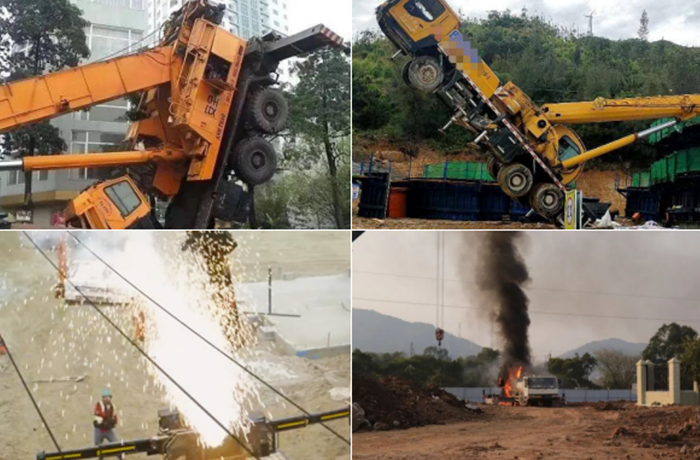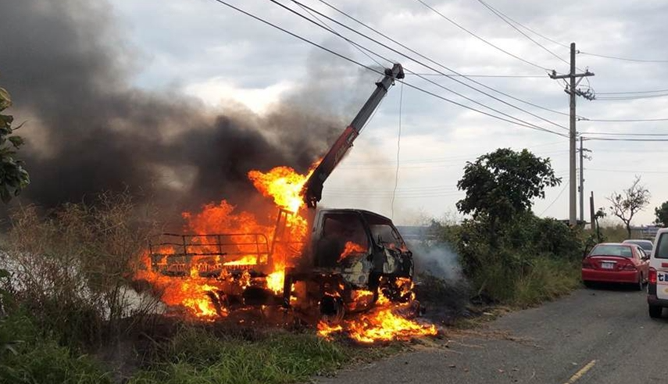Common causes of crane accidents include: overloading triggering rollover, ground problems leading to outrigger subsidence, operator error, unreliable continuous bolting, electrocution accidents caused by the lifting arm, wire ropes, and spreader exceeding the minimum distance from the transmission line...
Last year, a crane accident near the Six Hole Pier in Tainan City's Chigu District resulted in the tragic death of three workers. According to the preliminary investigation, the crane was suspected to have inadvertently hooked onto a high-voltage power line during operation, causing a fire and trapping the three people on board. Firefighters found that the three people had been killed during the rescue process, and the fire was completely extinguished after the power was cut off.
Inadvertent contact of the vehicle with the high voltage conductor may cause serious safety accidents and grid failure:
1 、Personal safety risk: Crane contact with high-voltage conductors may result in electric current passing through the crane and the operator, causing electrocution. Electrocution may lead to electric shock, electric shock, electric burns or even death.
2 、Crane Damage: High voltage current passing through the crane may cause damage to the crane, and the current may burn some or all of the wires, cables and crane equipment, resulting in equipment damage and downtime.
3, grid failure: crane contact with high-voltage wires may lead to grid short circuit, blackout and other faults ...
Knowing that there are high-voltage lines nearby, but because of the project requirements, the need for high-voltage lines under the construction of cranes, cranes, aerial work trucks, it is necessary to install the "near electric alarm", near electric alarms, alias near electric induction alarms, engineering vehicles, anti-electrocution device, the whole machine is divided into a transmitting end and receiving end, the transmitting end is installed in the car arm, and always monitoring The transmitter is mounted on the arm of the vehicle, which constantly monitors the high voltage signal during the construction process and sends the alarm information back to the receiver in the cab in real time, reminding the operator that "high voltage is dangerous, please do not approach".
Engineering installation, high rescue, municipal engineering, bridge refurbishment and other places, are inevitable use of aerial work vehicles, so it is necessary to equip with "near power alarm".






